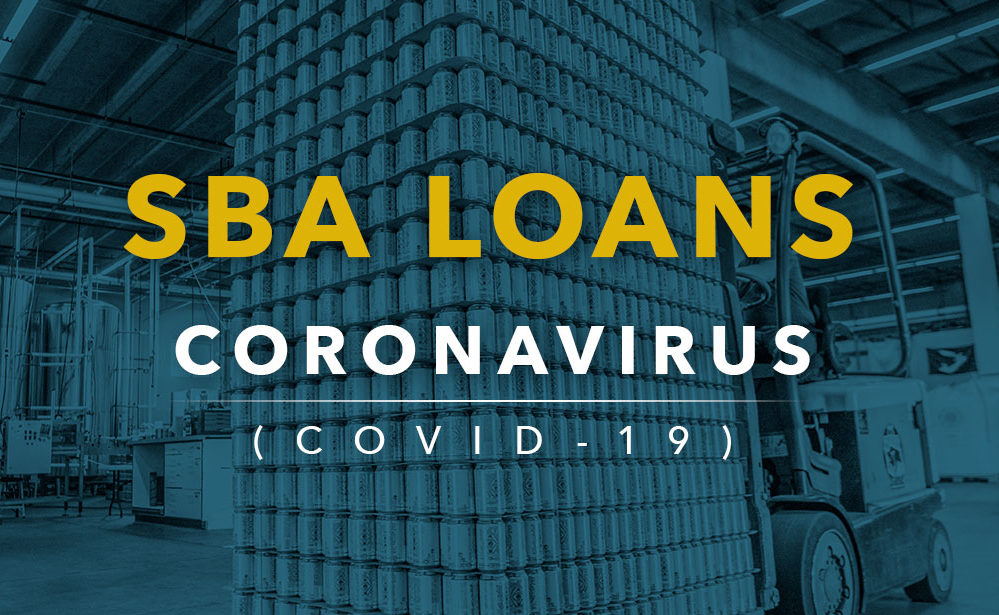Overview of the Recent Government Programs
This overview is intended to help a small business owner navigate the complex terrain of what is available as part of the $2 trillion package the government has passed to stimulate the economy and provide relief for businesses and individuals adversely affected by COVID-19. I am writing this after doing significant research with the team at Resolution Accounting. We set out to produce an overview for what small business owners and sole proprietors should understand about government programs that are available to help them during these uncertain times.
Our approach to this exercise is not intended to provide all the detail necessary to develop a strategy toward making the best decision regarding which program or programs you might apply for. It is, on the other hand, a snap shot for trying to get an overview of the Payroll Protection Program (“PPP”), Economic Injury Disaster Loan Program (“EIDL”), recent changes to the Unemployment Compensation Program, and the Economic Stimulus Package for individuals and families.
Appropriate Oversight. It is important to note with these government programs that everything is evolving, constantly changing, moving fast, and is confusing. I strongly urge all business owners to not try and navigate this terrain by yourself. You should be working specifically with a business accountant to help you navigate the decision making process. I mean no disrespect to CPA’s. I work with many CPA’s who are also friends and who provide valuable services. However, if their primary focus is on tax and/or public audits, they will likely not be up to date with the changes and nuances of your business. Your ‘everyday’ business accountant (whether you have your own in-house accountant or if you employ an outside accounting firm) should be your advisor with these programs. Why do I say that? They are the ones who best understand your business and who will be available to 1) advise you ongoingly as these programs unfold, evolve, and change and 2) they are in the best place to assist you with the documentation to support your applications.
Click here for a blog I wrote regarding the difference between a business accountant and a CPA.
CAVEAT. I strongly suggest you consider a strategy for the rest of this year before you decide which program or combination of programs you apply for. If you take advantage of the PPP plan (outlined in detail in the pages that follow), it will be necessary to carefully document what you spend so you can take full advantage of the provision where the government will actually forgive a portion of or all of the loan amounts. Additionally, we anticipate that the terms and conditions of these programs will very likely change if COVID-19 continues on for an extended period of time. If this is the case, there should be additional opportunities for even more funding from the government and even greater loan forgiveness. This will have a direct impact on the decision making process for how you manage any loan dollars you have been approved for. You do not want to be one of the business owners who will be devastated with having to pay back government loans (by contractual agreement) that could have been forgiven if they had only understood the programs and adhered to the guidelines.
Paycheck Protection Program (“PPP”)
$349 billion in loans to small businesses has been authorized for employers (small business owners and sole proprietors) to pay their employees during the COVID-19 crisis. A key provision of this program is that if certain conditions are met, 100% of the loan can be forgiven. How does it work? You will need to determine your average monthly payroll based on a few different methods of valuation. You then take the average monthly payroll x 2.5 and the government will give you a loan for that amount where loan payments are deferred for six months. The rates on the loans will be at 1% for a period of 24 months. The terms and conditions have already been changed a few times in the last few weeks. These are the latest in just the last few days. The likelihood of these terms continuing to change changing are strong if COVID-19 progresses where stay at home mandates and social distancing gets extended for long periods of time.
Loan Forgiveness. This is a key provision that many can likely take advantage of. As long as you employ all of your employees identified by June 30th (in your average monthly payroll) for a total of eight weeks, you can receive complete forgiveness of the PPP loan.
The loan amounts will be forgiven as long as:
- The loan proceeds are used to cover payroll costs, and most mortgage interest, rent, and utility costs over the 8 week period after the loan is made; and if
- Employee and compensation levels are maintained, meaning you keep all your people and pay them at least what was outlined in your application.
- For the amounts that are not associated with payroll, you will not receive forgiveness of the loan unless those funds can be proven to be allocated for mortgage interest, rent, and utilities. This should not be an issue with almost every business.
- Payroll costs are capped at $100,000 on an annualized basis for each employee. This simply means that if someone makes more than $100,000 you must use the figure of $100,000 for calculation purposes for that person’s annual payroll. So with this example their average monthly payroll would be $8333 per month.
- When calculating average monthly payroll, you can also include the monthly fees paid for health insurance, retirement benefits, and state unemployment tax.
This may seem like a lot detail, but it is really pretty straightforward for an accountant to compile and monitor.
Do I need to pledge any collateral for these loans? No. No collateral is required.
Do I need to personally guarantee this loan? No. There is no personal guarantee requirement. However, if the proceeds are used for fraudulent purposes, the U.S. government will pursue criminal charges against you.
How large can my loan be? The amount is subject to a $10 million cap.
When can I apply?
- Starting April 3, 2020, small businesses corporations and LLCs can apply to existing SBA approved lenders.
- Starting April 10, 2020, independent contractors and self-employed individuals can apply through existing SBA approved lenders.
- Other regulated lenders will be available to make these loans as soon as they are approved and enrolled in the program.
Issues with Filing. Here is a problem people are already experiencing. You cannot apply in person or with a paper application; you can only do an online application. The portals to apply at many banks were not ready for the April 3 deadline. Some are still not working completely, are going down or where all you can do is get a number to be in line to file later. It is causing confusion and anxiety for many.
Applying for Forgiveness. This has changed a few times already, but as of now, it has been left open. It is likely that within approximately 2-3 months from the time you actually employ your employees for the eight-week period outlined above, you can apply for forgiveness. As a practical matter, with interest that might need to be paid at an annual rate of 1% per annum, it is basically a non-issue in the domain of cash flow.
Combine Unemployment Compensation with a PPP. This is a really good strategy to both preserve cash as well as to take advantage of getting a government loan that is basically a grant. You can now have all your employees (the ones associated with a PPP loan) collect unemployment from now up until June 30th. You can then start your two-month PPP (where you have already received 2.5 times the amount of the monthly payroll plus other provisions outlined above) and get the entire amount forgiven as long as you meet the conditions, also outlined above. This will have a very positive effect on cash.
Are you starting to get a little confused yet? This is why I strongly suggest, when considering these programs, that you should be working with a business accountant whose sole focus is on bookkeeping and accounting and advising small business owners like you.
Economic Injury Disaster Loan Program (“EIDL”)
This is a loan program of up to $2 million where businesses of less than 500 employees can receive an immediate advance of $10,000. The program is administered by Small Business Administration (“SBA”). To apply for the loan, Gross Revenue and Cost of Goods Sold are submitted for a 12-month period from 1/31/19 through 1/30/20. The interest rate is 3.75% for businesses and 2.75% for non profits.
What follows are the Use of Funds:
- Paid sick leave for employees unable to work due to the effect of COVID-19
- To maintain Payroll
- For increased costs due to supply chain disruption
- Rent or mortage payments
- Repaying obligations that cannot be met due to lost revenues
- If you receive an EIDL to cover payroll expenses, and you receive funding on the PPP, you would have to use the EIDL for different operating expenses and NOT payroll during the 8 week period you are using the PPP funds to qualify for the loan forgiveness on the PPP.
- If you don’t need both you can refinance the EIDL into the PPP. Any amount given to you as a grant (up to 10k ) under the EIDL will reduce the amount forgiven under the PPP.
I strongly suggest that all small business owners at least apply for the immediate $10,000 advance until you figure out the best way to proceed. The worst case is you have a low interest rate loan and have some immediate relief on cash flow. You can always pay it back immediately with no recourse and no penalties.
Confused yet? Again, consult your accountant.
Unemployment Compensation
One significant change for Self Employed Individuals. Prior to the COVID-19, people who were self-employed could not file for benefits under Unemployment Compensation. Those people who were characterized as Self Employed Individuals, Self Employed Independent Contractors, and those also known as Gig Workers were excluded could not previously file for unemployment compensation, as they had no W2 wages. That has now changed; they will be eligible, but the guidelines and application process have not been provided yet (as of April 6).
To Qualify. To qualify you have to have a worked a minimum of 18 weeks and have earned at least $116 per week, which is the equivalent of earning $1688 during the highest quarter in the your base period.
Federal Pandemic Unemployment Compensation. People who have filed for Unemployment Compensation are now entitled to an additional $600 per week until 7/31/2020. This applies to people whether they are part of full time. There are no guidelines published yet as to when people will actually receive this benefit and we have not heard of anyone yet that has received it.
Extension of benefits. Previously the total amount of weeks one could collect unemployment varied state by state. The federal government has now mandated an additional 13 weeks of benefits. As an example, in Pennsylvania, a person can now collect unemployment benefits up to 39 weeks.
Economic Stimulus Package
Everyone that qualifies is entitled to receive a one-time payment by the third week of April. Payments will be made to the following that qualify:
- Individuals not making more than $75,000 will be receiving $1200 plus an additional $500 per child that is still considered a dependent.
- Couples not making more than $150,000 will be receiving $2400 plus an additional $500 per child that is still considered a dependent.
Disclaimer. Although I have read hundreds of pages in the last two weeks from numerous sources that include outlines of the most recent government legislation, Treasury Department guidelines and applications forms, SBA guidelines and application forms, communications from leaders in the fields of accounting, finance, and banking, and a personal zoom meeting with a banking executive and although I believe what I am offering you is accurate at this juncture in time, I take no responsibility for any decisions you might make after reading this communication.
Gina Edwards
CEO
Resolution Accounting
610-486-6580





